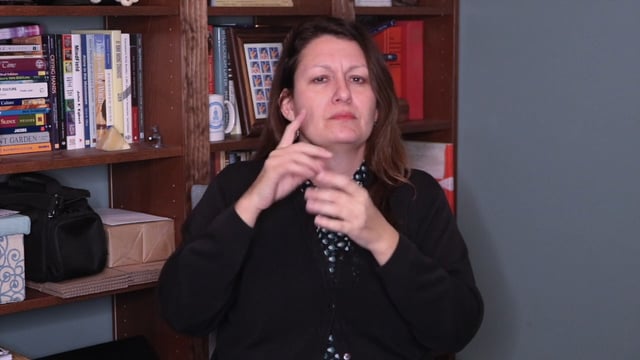This article originally appeared at i711.com.
Nowadays, teaching American Sign Language has taken on more prestige than back when it was volunteer-taught, and standards have been raised – albeit slowly – in teaching the language. This is largely due to the increased research, training and understanding of the complexities of ASL and its impact as a stand-alone language.
American Sign Language Teachers Association (ASLTA), a terrific organization, has worked diligently to promote the field of teaching ASL as an esteemed, authentic career choice by offering various resources and certification for its members. Out of 710 members, just a little over 350 members are certified, according to ASLTA officers. That’s a pretty good number – or is it?
Certification includes, in order of rank: provisional, qualified and professional (for more details, see www.aslta.org). The requirements for each category are actually quite fair — if you teach on a full- time basis. It’s my suspicion that the majority of ASL instructors in the nation do not teach full-time; rather, they’re adjunct faculty at colleges and universities or in community education programs. I’m one of them. And I’ve heard story after story from many other people who let their ASLTA memberships lapse for that very reason: they, as part-time teachers, weren’t able to achieve certification beyond provisional because the opportunities just aren’t there for them to meet the requirements.
The facts are simple. If you aren’t able to find enough ASL-related teaching or training gigs as a part-time teacher, you’re screwed. It doesn’t matter if ASLTA’s certification systems are in accordance with other foreign language certifications or systems; ASL, unfortunately, has not yet achieved equal standing in the community in many states. Teaching opportunities aren’t quite as widespread as, say, Spanish classes.
It’s a Catch-22 situation: there are plenty of qualified (and that’s the key word, qualified) ASL instructors who can’t find teaching opportunities due to various reasons — location, the lack of full-time positions in their areas, positions requiring them to teach full-time when they’re only available part-time, etc. Therefore, they’re unable to get or maintain their ASLTA certifications. Keep in mind that many teaching positions require ASLTA certification. So part-timers who can’t get certification are once again out of luck.
Is this really fair? Aren’t we losing qualified instructors this way? And hurting the profession’s evolution as a consequence?
I strongly believe that ASLTA’s numbers will grow by leaps and bounds — and ASL teaching as a profession will gain credibility — if they add a new certification category for part-time instructors. This category would continue to uphold ASLTA’s high standards of professionalism, but acknowledge the limited opportunities that part-time instructors face.
In fact, about a year ago, I e-mailed President Leslie Greer about this possibility. She asked me to write a formal letter that she’d share with the board. Excerpts of my Sept. 10, 2004 letter are below:
…for part-time or adjunct teachers like myself who want to continue promoting the teaching of ASL as a profession, [meeting the hours required] is difficult… I have discovered that many individuals have not pursued their certifications for this reason, and that they in turn decide not to pursue membership of ASLTA.
…The professional development requirements are of no problem for most part- time teachers. It is the teaching requirements that others and I find to be an obstacle.
In addition to my being employed full-time in a profession that is not in the field of ASL teaching, another obstacle preventing me from being able to meet the required hours of teaching is that I live in a rural area… and most of the teaching positions are already “taken” by other long-time ASL teachers or residents of the area. Even if I tutor on a regular basis, that would only amount to maybe five hours a month at the most. I provide workshops nationally on an occasional basis, usually three to four times a year. This is not enough for the requirements of each level beyond provisional. These obstacles are true for many other part-time teachers…
I would like to request that ASLTA consider forming a new category for those who are very much in need and want of ASLTA certification, yet do not want to be forced to work full-time and/or sacrifice their current professions in order to maintain the certification. A new category or categories for part-time ASL teachers would create a new wave of membership, and in turn maintain the professionalism so needed in the teaching profession.
I never heard back on this matter; I have no idea if this was shared with the board or not. I personally know of more than a hundred teachers, both non- members and members of ASLTA, who agree with me on this matter. We recognize the sheer importance of maintaining high standards for the profession of teaching ASL. With these standards, ASL will gain even more respect and prestige that still hasn’t quite been achieved in many schools or places.
With ASLTA’s drastic drop in membership from over 1,000 during the 1990s to only 750 today, this addition of a new category would help membership and ensure that professional standards are maintained for all ASL teachers, part-time or full-time.
Copyrighted material. This article can not be copied, reproduced, or redistributed without the written consent of the author.




